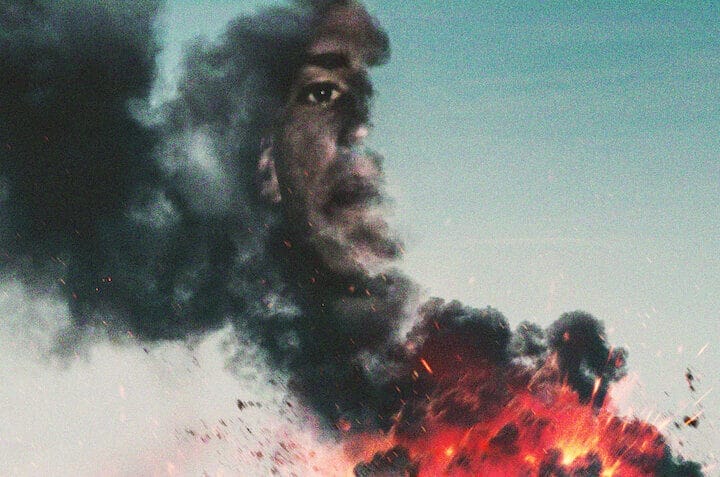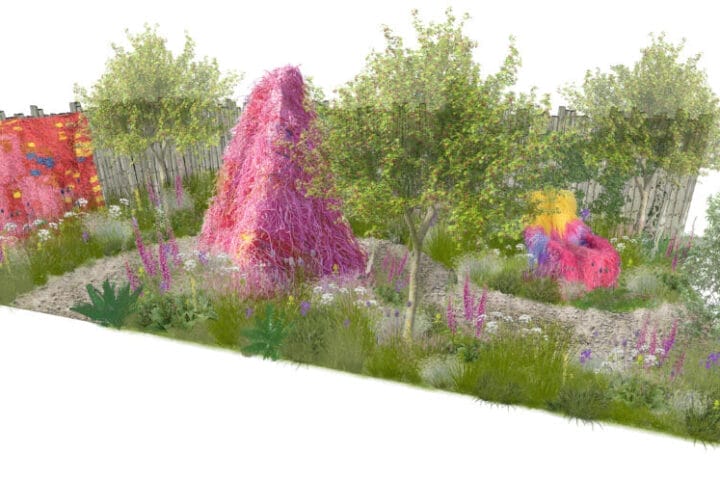Pace Gallery is pleased to present New York-based artist Torkwase Dyson’s first exhibition with the gallery at its recently opened space in East Hampton. Dyson’s multidisciplinary approach to artmaking interrogates historical and existing infrastructure and architecture, particularly how Black and brown bodies compose, perceive, and negotiate space. Dyson will debut a series of new paintings and drawings made during the period of isolation caused by the outbreak of the coronavirus in New York City, which also coincided with the start of the artist’s year-long artist residency at the Wexner Center for the Arts. Studies for Bird and Lava will be on view from August 1 – 9, 2020.
Integral to understanding Dyson’s practice is the artist’s assertion of Black Compositional Thought, which functions as a mode of awareness that contends with the formal applications of mark-making and constructions of space to examine the legacy of environmental justice and Black spatial practices. Moving between the artist’s apartment in Harlem to a larger studio space in Newburgh, New York, Dyson began a series of new drawings during the recent shutdown, deepening her articulation of Black Compositional Thought through experiments in animation, intimately scaled works on paper, and shape studies. This exhibition is the culmination of a period of a process-oriented study for Dyson’s ongoing project, Bird and Lava, which is a multifaceted expression of a question: “If blackness is already an architectonic developed out of liquidity (ocean), can the work embody this phenomenon and offer sensation (sensoria) at the register of liberation?”
Dyson has created a compositional system of curvilinear and rectilinear shapes as a starting point for this new body of work. Responding to the spatial tragedies of enslaved people who hid or stowed away in architectural spaces to attain their freedom, especially Anthony Burns (hull=curve), Henry “Box” Brown (box=square) and Harriet Jacobs (garret=triangle), this shape system is a compositional tool to articulate an infrastructure of resistance in geometric abstraction. Interested in the phenomenological presence of geometric forms, painting and dimensionality, the artist’s hand is present throughout these new works, in the layers of wax and ink on paper, and the compositions that gesture to horizon lines and ocean depths. In particular, Scalar Test #1, a wall-size abstract graphite drawing offers a surface that appears to shift and move under light and with movement, like waves contained within geometry.
Dyson also refers to the Plantationocene as site of ongoing exploration in her practice, it’s spatial and architectural infrastructures of power, and its accompanying strategies of survival and resistance. The Plantationocene, a term first proposed by feminist theorist Donna Harraway, centralizes the role of an agroindustrial system of enterprise as integral to the historic rise and growth of capitalism. In particular, the geography of the Atlantic Ocean and its relationship to the Plantationocene is present throughout Dyson’s new works. Using this water mass as an organizational tool, Dyson’s new works explore the shape-space of spheres contained in trapezoids, with each work charting the horizon line and the surface below with new compositional proposals. Together these forms gesture to the hauntological specter of the Middle Passage and the waterways that have been sites of colonialism for Black bodies, as well as spaces of survival and resilience. Specifically, Dyson’s new large-scale Tondo painting, I Am Everything That Will Save Me, builds on
a series of a drawings that experiment with the relationships between shape and depth of form. I Am
Everything That Will Save Me is bisected by a central column, and holds within it a black trapazoidonal shape that reaches beyond the surface of the painting, revealing the grain of the wood at its top edges.
Dyson’s poetics of form and composition offers an approach to abstraction that conveys a self-determination and spatial discovery in phenomenological gestures. In the artist’s words: “In this moment of environmental precarity we will need to be both liquid and mountains, bird and lava. And it is the density of black grace that will always be the thing that keeps us in our own humanity. Thinking through the histories of black liberation, these are the victories that fortify my being in the objects I make. It’s time for a new relationship with abstraction, an illegal abstraction developed out of the condition of a new world building toward liberation and revolution.”
Dyson’s solo exhibition with Pace follows the gallery’s inaugural collaboration with the artist, commissioning her first major performance piece in November 2019, I Can Drink The Distance: A Plantationocene in 2 Acts, co-presented with Performa and featuring collaborations with Christina Sharpe, Dionne Brand, Arthur Jafa, Deja, Smith, Dark Adaptive, Gaika, and Autumn Knight, which formed part of the inaugural season of the gallery’s Pace Live program curated by Mark Beasley and Andria Hickey. In 2019, Dyson was also awarded the Studio Museum’s Joyce Alexander Wein Artist Prize and the Anonymous Was a Woman award for painting. More recently, in spring 2020, Dyson was the subject of a major solo exhibition at the New Orleans Museum of Art.
Torkwase Dyson (b. 1973, Chicago, Illinois) describes herself as a painter working across multiple mediums to explore the continuity between ecology, infrastructure, and architecture. Examining ideas of distance and scale as well as the history and future of black spatial liberation strategies, Dyson’s abstract works grapple with the ways in which space is perceived and negotiated, particularly by Black and brown bodies. In 2019, Dyson’s solo exhibition I Can Drink the Distance was on view at The Cooper Union, New York, and her work was also presented at the Sharjah Biennial.
Dyson has been the subject of numerous solo exhibitions and installations at institutions, including Graham Foundation for Advanced Studies in the Fine Arts, Chicago; Bennington College VAPA Usdan Gallery, Vermont; Colby College Museum of Art, Franconia Sculpture Park, Maine; Schuylkill Center for Environmental Education, Philadelphia, and Davidson Contemporary, New York. Her work has been exhibited in group shows internationally, including Between the Waters at the Whitney Museum of American Art, New York (2018) and Plumb Line: Charles White and the Contemporary at California African American Museum, Los Angeles (2019). Her work was also included in the 2010 Whitney Biennial. In addition to many fellowships and residencies, she has been the recipient of a The Joan Mitchell Painters and Sculptors Grant, Nancy Graves Grant for Visual Artists, and a Brooklyn Arts Council grant.
Pace is a leading contemporary art gallery representing many of the most significant international artists and estates of the twentieth and twenty-first centuries.
Under the leadership of President and CEO Marc Glimcher, Pace is a vital force within the art world and plays a critical role in shaping the history, creation, and engagement with modern and contemporary art. Since its founding by Arne Glimcher in 1960, Pace has developed a distinguished legacy for vibrant and dedicated relationships with renowned artists. As the gallery approaches the start of its seventh decade, Pace’s mission continues to be inspired by a drive to support the world’s most influential and innovative artists and to share their visionary work with people around the world.
Pace advances this mission through its dynamic global program, comprising ambitious exhibitions, artist projects, public installations, institutional collaborations, performances and interdisciplinary projects through Pace Live, and curatorial research and writing. Today, Pace has seven locations worldwide: two galleries in New York—including its newly opened headquarters at 540 West 25th Street, and an adjacent 8,000 sq. ft. exhibition space at 510 West 25th Street—as well as galleries in Palo Alto, London, Geneva, Hong Kong, and Seoul.











